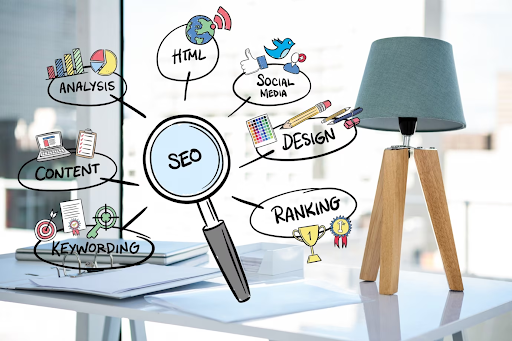Local SEO and Web Design: A Winning Combination
Introduction
In today’s digital landscape, establishing a strong online presence is vital for businesses of all sizes. Whether you run a small local bakery or a global e-commerce empire, your website is often the first point of contact for potential customers. But having a beautifully designed website is only part of the equation. To truly succeed in the digital realm, you need to combine it with effective local SEO strategies. In this article, we’ll explore the synergy between local SEO and web design, uncovering why this combination is a recipe for success.

The Role of Local SEO
Local SEO, or Search Engine Optimization, is the practice of optimizing your online content to appear in search results when users in your geographic area search for products or services related to your business. It’s the key to ensuring that your business gets noticed by potential customers in your vicinity. Recent studies show that a staggering 46% of all Google searches have local intent, making local SEO more critical than ever.
The Power of Local Search
Local searches have witnessed a significant surge in recent years, largely thanks to the proliferation of mobile devices. When people search for “best pizza near me” or “plumber in [city],” they’re conducting local searches. Google recognizes the importance of local search and continually refines its algorithms to deliver more accurate and location-specific results.
How Web Design Fits In
Web design is more than just aesthetics; it’s about creating an engaging user experience. Think about your website as your digital storefront. When a user lands on your site, they should find it visually appealing, easy to navigate, and informative. Here’s where the connection between web design and local SEO becomes evident.
Mobile Responsiveness
With mobile devices accounting for over half of all web traffic, having a mobile-responsive website is no longer optional—it’s mandatory. Google rewards mobile-friendly sites with better rankings in search results. When your web design is responsive, it ensures that users on smartphones and tablets can access your site effortlessly.
Page Speed Matters
Page loading speed is another crucial aspect of web design. Slow-loading websites frustrate users and can lead to high bounce rates. Additionally, Google considers page speed as a ranking factor. By optimizing your web design for faster load times, you improve both user experience and SEO performance.
User-Friendly Navigation
A well-structured website with intuitive navigation is not only user-friendly but also SEO-friendly. When visitors can easily find the information they seek, they stay longer on your site, reducing bounce rates and improving your SEO metrics.

Content and SEO Integration
Quality content is the cornerstone of effective local SEO. Your website should not only look appealing but also provide valuable and relevant information to your audience. Here’s how web design and content come together to enhance your local SEO efforts.
Keyword Optimization
Effective keyword optimization involves seamlessly integrating target keywords into your website’s content. This should be done in a natural and informative way that enhances the user experience. Strategically placing keywords in headings, subheadings, and body text can improve your chances of ranking higher in local search results.
Local SEO-Friendly Landing Pages
For businesses serving multiple locations, creating dedicated landing pages for each area can be a game-changer. These pages can be tailored to specific local keywords and provide information about services, hours of operation, and contact details for each location.
Building Backlinks
Backlinks, or inbound links from other reputable websites to your site, play a pivotal role in SEO. A well-designed website can naturally attract backlinks from other businesses and websites in your local area. When other sites link to yours, it signals to search engines that your content is valuable and trustworthy.
Monitoring and Analytics
The synergy between local SEO and web design extends to monitoring and analytics. Implementing tools like Google Analytics allows you to track user behavior, identify popular pages, and gain insights into which aspects of your web design are working well and where improvements are needed.
Conclusion
In today’s competitive digital landscape, businesses must leverage every advantage to stay ahead. Combining the power of local SEO with effective web design is not just a winning combination; it’s essential for success. By optimizing your website for both users and search engines, you can attract more local customers, boost your online visibility, and ultimately drive business growth. Keep in mind that the digital world is constantly evolving, so staying up-to-date with the latest trends and best practices is key to maintaining your edge in the online arena.

